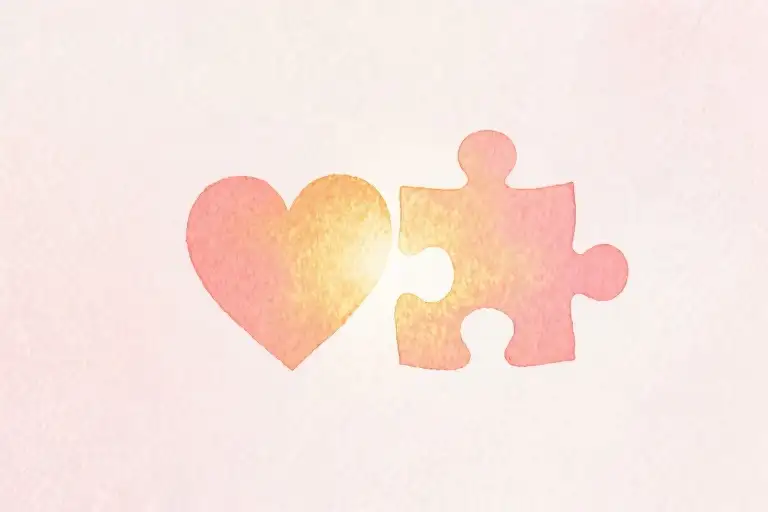There’s a particular kind of social purgatory many of us find ourselves in—those friend circles we never actually chose. They come as package deals with jobs, partners, or life circumstances, creating this strange dynamic where you’re constantly navigating relationships with people you’d probably never select voluntarily.
I remember this one woman from a past social circle who embodied everything toxic about forced socialization. She had a PhD, which somehow made the whole situation more baffling. You’d expect certain levels of emotional intelligence with that much education, but no. She was the kind of person who could smile at you while simultaneously sharpening the knife she’d later use behind your back.
Her gossip wasn’t the casual kind people sometimes fall into without thinking. It was calculated, malicious, and delivered with this unsettling precision. She’d share details about people’s personal lives, relationship problems, career struggles—all while maintaining this perfectly pleasant facade when interacting with them directly. The cognitive dissonance was staggering.
What made it particularly confusing was that the rest of us weren’t saints either. We all had our flaws and occasionally participated in the social dynamics. But her behavior stood out like a neon sign in fog—impossible to ignore, painfully obvious to everyone except perhaps herself.
I often wondered about her awareness level. Did she genuinely not realize how transparent her behavior was? Was she so full of herself that she believed nobody would ever call her out? Or did she simply not care about the damage she caused as long as she remained the center of attention?
Sometimes the simplest explanation felt most plausible: maybe she was just fundamentally not very bright when it came to human relationships. Academic intelligence doesn’t always translate to emotional intelligence, and her case was a perfect example of that disconnect.
The situation eventually reached its breaking point at a party where several people who had quietly tolerated her behavior finally spoke up. What fascinated me most was her immediate shift into victim mode. The transformation was instantaneous—from aggressor to wounded party without any apparent self-reflection.
This experience made me think about how many of us navigate these toxic friendship dynamics. We stay in circles that don’t serve us because leaving feels complicated, because we worry about social consequences, or because we’ve convinced ourselves that some connection is better than none.
But here’s what I’ve learned: toxic relationships have a way of contaminating everything they touch. That PhD-holding gossip wasn’t just unpleasant company; she created an environment where trust became impossible, where people hesitated to share anything personal, where every conversation felt potentially dangerous.
These situations force us to ask difficult questions about our own boundaries and values. How much disrespect are we willing to tolerate for the sake of social convenience? At what point does maintaining these connections become more costly than walking away? And perhaps most importantly—why do we so often prioritize keeping the peace over protecting our peace?
The answers aren’t simple, but the questions are worth sitting with. Because somewhere between the forced smiles and uncomfortable gatherings, we’re making choices about what kinds of relationships we’re willing to accept in our lives.
Recognizing the Red Flags in Toxic Social Circles
We’ve all found ourselves in social situations where the dynamics feel off—where smiles don’t reach eyes and conversations leave a bitter aftertaste. These environments often present themselves through subtle yet consistent patterns that, when recognized, can save us considerable emotional energy.
Surface friendliness masking underlying malice stands as perhaps the most telling indicator. I recall that woman with the PhD who could compliment someone’s achievements over lunch while dissecting their personal life over dinner. This behavioral dichotomy creates cognitive dissonance for those observing it: the same person who offers genuine-seeming encouragement directly to someone will later dismantle that person’s character with surgical precision. The transition between these modes becomes so seamless that it feels almost professional, as if they’ve mastered some dark art of social manipulation.
What makes this particularly insidious is how it operates within accepted social frameworks. In workplace settings or partner-introduced circles, we often grant initial trust based on the context itself. We assume that because someone occupies a particular professional or social position, they must adhere to certain basic ethical standards. Yet toxic individuals exploit this very assumption, using the credibility of their position or connections as camouflage for behavior that would otherwise raise immediate concerns.
The sensation of forced integration represents another significant red flag. There’s a distinct difference between choosing to spend time with people and feeling obligated to tolerate them because of external circumstances. This often manifests as that sinking feeling when checking your calendar and seeing another group gathering you’re expected to attend. You might find yourself rehearsing excuses beforehand or feeling genuine relief when events get canceled. The social pressure to maintain appearances—especially when these connections overlap with professional or romantic relationships—creates a special kind of emotional exhaustion that healthy relationships simply don’t produce.
Within these group dynamics, power imbalances reveal themselves through subtle but consistent patterns. Notice who controls conversations, whose opinions get validated immediately, and whose perspectives get routinely dismissed. Toxic circles often have unspoken hierarchies where certain members enjoy immunity to criticize while others serve as perpetual targets. There might be inner circles and outer circles, with membership status fluctuating based on arbitrary criteria that keep everyone slightly off-balance and eager to please those in power.
Language itself becomes weaponized in these environments. Pay attention to how people speak about absent members. Does the tone shift when someone leaves the room? Do compliments suddenly transform into criticisms once the subject is safely out of earshot? There’s often a particular vocabulary that develops—coded phrases and knowing glances that signal shared judgments without explicitly stating them. This linguistic ecosystem maintains plausible deniability while effectively communicating who’s in favor and who’s not.
The consistency of targets also speaks volumes. While healthy groups might have occasional conflicts that get resolved, toxic circles often have designated scapegoats—people who consistently receive criticism regardless of their actual behavior. Sometimes these targets rotate, creating an environment where everyone feels temporarily safe but ultimately replaceable in the blame game. This rotation strategy proves particularly effective at maintaining control, as it prevents alliances from forming against the primary instigators.
Perhaps the most subtle yet powerful indicator is the emotional residue these interactions leave behind. After spending time with healthy social connections, you typically feel energized, understood, and genuinely connected. Toxic interactions, however, often leave you feeling drained, anxious, or vaguely dissatisfied without being able to pinpoint exactly why. There might be a sense of having performed rather than connected, of having monitored your words carefully rather than spoken freely. This emotional hangover persists long after the actual interaction ends, sometimes manifesting as reluctance to check messages or attend future gatherings.
Social media interactions often amplify these dynamics. Notice who gets tagged in group photos versus who remains conspicuously absent from digital documentation. Observe comment patterns—does the same person always receive immediate validation while others get ignored regardless of what they post? Digital spaces become extensions of the toxic dynamics, sometimes even more revealing than in-person interactions because they leave tangible evidence of exclusion and preferential treatment.
Financial and transactional elements sometimes emerge in these circles. There might be uneven expectations about who pays for group meals, who hosts events, or who provides resources without reciprocation. These imbalances often get justified through complex social narratives about who “can afford it” or who “owes” the group something based on past interactions. The accounting becomes emotional rather than financial, creating obligations that are impossible to quantify but feel intensely real to those involved.
Time itself becomes a currency in these relationships. You might notice that certain people’s time gets consistently valued while others get taken for granted. Late arrivals might be charming for some but criticized for others. Last-minute cancellations might be forgiven for inner circle members but held against those on the periphery. These double standards operate so smoothly that they often escape conscious notice until you step back and observe the pattern across multiple interactions.
So how might you assess your own social environment? Consider keeping a simple journal after social interactions for a few weeks. Note how you felt beforehand, during, and afterward. Track your energy levels, your anxiety, your genuine enjoyment. Notice if certain people consistently appear in negative contexts versus those who leave you feeling positive. Sometimes the patterns become visible only when we create some distance—either physically or through deliberate reflection—from the daily grind of social obligations.
There’s no perfect checklist for identifying toxic relationships, as context always matters. But when you find yourself consistently feeling worse rather than better after social interactions, when you notice persistent double standards and emotional manipulation, when you feel pressured to maintain connections that drain rather than sustain you—these might be the red flags worth acknowledging. The first step toward healthier relationships often begins with recognizing which ones aren’t serving us, and having the courage to acknowledge that recognition without immediate judgment or action.
The Psychology Behind Gossip Behavior
We’ve all encountered that person—the one who smiles to your face while sharpening knives behind your back. What drives this seemingly contradictory behavior? Understanding the psychological mechanisms behind gossip reveals patterns that extend far beyond mere cattiness or boredom.
Narcissistic Patterns: Building Self-Worth Through Diminishing Others
The PhD-holding gossip from my previous experience exemplifies a classic pattern: using others’ perceived flaws as stepping stones for self-elevation. This isn’t about sharing information; it’s about establishing hierarchy. The narcissistic gossiper operates from a fragile ego that requires constant validation through comparison. By highlighting others’ failures, insecurities, or mishaps, they create an illusion of their own superiority without having to achieve anything substantive. The content of the gossip matters less than the underlying message: “I may have flaws, but at least I’m not like them.”
This behavior often stems from deep-seated insecurity masked by apparent confidence. The more educated or accomplished the gossiper, the more striking this contradiction becomes. Education theoretically should cultivate empathy and critical thinking, yet some individuals simply acquire more sophisticated tools for the same primitive social games. They learn to dress their gossip in intellectual language, making it sound like psychological analysis rather than plain character assassination.
Security Seeking: The False Comfort of Group Alignment
Gossip serves as social currency that buys temporary membership in group dynamics. When someone shares a negative observation about an absent party, they’re essentially saying, “I trust you enough to share this, and I assume we see this person the same way.” This creates instant bonding through shared judgment—a dangerous but effective shortcut to feeling included.
The workplace gossip particularly thrives on this mechanism. In environments where people feel insecure about their positions or value, gossiping about others becomes a way to deflect attention from one’s own inadequacies. It’s a preemptive strike: if everyone’s focused on discussing someone else’s shortcomings, nobody’s examining yours. This creates a false sense of security through misdirection, like a magician drawing attention away from the actual trick.
I’ve observed how gossip circles form almost defensively in groups that lack clear purpose or genuine connection. When people don’t have substantial common ground, they often default to discussing those who aren’t present. It becomes the social equivalent of junk food—quick, satisfying, but ultimately empty and unhealthy.
Attention Economy: Manufacturing Social Relevance
Some people gossip simply because it makes them interesting. In social settings where they might otherwise fade into the background, possessing juicy information grants immediate center stage. The gossiper becomes the temporary sun around which others orbit, leaning in, listening intently, asking follow-up questions. For those craving validation, this attention hit becomes addictive.
This attention-seeking behavior often follows a predictable pattern: the information shared starts as mildly interesting, escalates to increasingly personal details, and eventually crosses into outright harmful territory. The gossiper doesn’t necessarily intend damage; they’re simply chasing the diminishing returns of audience engagement. Like any addict, they need stronger doses to achieve the same effect over time.
What begins as “Did you hear about Sarah’s promotion?” gradually becomes “Did you hear what Sarah’s husband said about her promotion?” and eventually deteriorates into outright fabrications when real gossip runs dry. The need to maintain social relevance outweighs ethical considerations.
Power Dynamics: Information as Social Control
The most calculated form of gossip functions as power currency. By controlling information flow—what gets shared, with whom, and when—the gossiper positions themselves as a social gatekeeper. This creates dependency: others must stay in their good graces to access the “inside information” that circulates within the group.
This power-play gossip often involves strategic timing and selective sharing. The gossiper might tell Person A one thing and Person B another, then watch how the different versions play out across the social landscape. It’s social engineering at its most manipulative, turning human relationships into a chessboard where people become pawns in someone else’s game of influence.
In workplace settings, this manifests as controlling career narratives—sharing unverified information about someone’s performance, spreading rumors about impending layoffs, or subtly undermining others’ reputations to advance personal agendas. The gossiper doesn’t need formal authority when they can manipulate perceptions through carefully planted narratives.
The Self-Awareness Paradox
What fascinates me most about habitual gossips is their apparent lack of self-awareness. The PhD holder from my example seemed genuinely surprised when confronted about her behavior. This suggests either astonishing cognitive dissonance or a deeply ingrained blind spot about how her actions affected others.
Some gossips genuinely believe they’re helping by “warning” others about someone’s flaws. They frame their behavior as protective rather than destructive. Others see gossip as harmless social entertainment, failing to recognize the cumulative damage of repeated character erosion. Few acknowledge the obvious truth: that how someone speaks about others tells you everything about how they’ll eventually speak about you.
This psychological landscape explains why simply asking a gossip to stop rarely works. The behavior serves too many psychological functions simultaneously: ego protection, social bonding, attention acquisition, and power consolidation. Asking someone to abandon gossip is like asking them to dismantle their entire social survival system without providing alternatives.
The solution isn’t necessarily to confront the gossiper—though that sometimes becomes necessary—but to understand the mechanisms well enough to avoid getting caught in their web. Recognizing these patterns allows you to see the behavior not as personal attack but as manifestation of someone else’s internal struggles. This perspective doesn’t excuse the behavior, but it does make it easier to navigate without taking the bait or becoming collateral damage in someone else’s psychological drama.
Practical Strategies for Navigating Toxic Social Circles
When you find yourself entangled in a web of gossip and negativity, the first step isn’t necessarily to burn bridges, but to build better boundaries. I’ve learned through uncomfortable experience that the most effective approach often involves a combination of subtle resistance and clear personal limits.
Setting boundaries begins with understanding what you will and won’t accept. This isn’t about making dramatic declarations, but about consistently reinforcing your standards through action. When someone begins gossiping, you might simply say, “I prefer not to discuss people when they’re not present” or “That’s not really my business to comment on.” The key is consistency—people learn what to expect from you based on repeated patterns, not isolated moments of assertiveness. Establish consequences that you’re actually willing to enforce, whether that’s changing the subject, physically moving away from the conversation, or eventually limiting your time with that person altogether.
The art of selective response transforms potentially toxic interactions into neutral exchanges. Instead of engaging with gossip, practice using non-committal phrases like “That’s an interesting perspective” or “I see” without adding fuel to the fire. Redirect conversations toward more constructive topics by asking questions about shared interests or current events. This approach allows you to maintain civility without participating in harmful discourse. I’ve found that most gossipers eventually seek more receptive audiences when they consistently receive bland responses from you.
Building alliances within the group can provide both validation and practical support. Look for others who seem equally uncomfortable with the toxic dynamics—you’ll often find them on the periphery of conversations, maintaining polite but distant engagement. A simple “I’ve noticed this pattern too” conversation can create solidarity without adding to the drama. These connections serve as reality checks when you question whether you’re overreacting to the situation. In workplace settings particularly, having even one ally who shares your values can make the environment significantly more manageable.
Knowing when and how to exit a toxic circle requires both courage and practical planning. The decision to leave often comes after repeated boundary violations despite clear communication. Start by gradually reducing your involvement—decline invitations that typically lead to uncomfortable situations, limit your availability, and diversify your social connections outside the group. If you’re dealing with a partner’s friend group, have an honest conversation about your need to establish healthier social boundaries while respecting their existing relationships. Complete withdrawal isn’t always necessary or practical, but creating emotional and physical distance can be remarkably liberating.
Sometimes the most powerful strategy involves redefining your relationship with the group rather than completely abandoning it. You might maintain surface-level civility while investing your emotional energy elsewhere. Attend necessary gatherings but limit your stay, engage in group activities that don’t facilitate gossip, and focus on one-on-one connections with healthier members. This balanced approach acknowledges the complexity of human relationships—that we can appreciate certain aspects of people while protecting ourselves from their toxic behaviors.
Remember that implementing these strategies isn’t about changing other people, but about preserving your own peace. Toxic dynamics often persist because multiple people benefit from them in some way—whether through entertainment, social bonding, or feeling superior to others. Your refusal to participate may initially create tension, but it also creates space for healthier interactions to emerge. Some relationships will adapt to your new boundaries, while others may naturally fade away, making room for connections that align with your values.
Building a Healthy Relationship Ecosystem
Moving beyond simply managing toxic dynamics requires a proactive approach to cultivating the social environment you actually want to inhabit. This isn’t about defensive maneuvers or damage control—it’s about designing your relational world with intention.
Active selection based on shared values transforms socializing from something that happens to you into something you consciously create. The most nourishing relationships typically form around shared principles and worldviews rather than mere convenience or circumstance. Notice where your values align with others—not just in grand philosophical terms, but in daily behaviors: how people treat service staff, how they speak about absent friends, what they consider worthy of their time and energy. These micro-behaviors reveal more about compatibility than any resume or social credential. The woman with the PhD who gossiped maliciously demonstrated how credentials and character can exist on completely different planes. Selection becomes easier when you prioritize ethical alignment over social status or superficial connections.
Quality over quantity might sound like a cliché, but it’s the foundation of sustainable social health. In an era of digital connection metrics, we often confuse broad networks with meaningful relationships. One conversation that leaves you feeling understood and energized matters more than twenty superficial interactions. Depth creates resilience—when challenges arise, these are the connections that provide real support rather than drama. This doesn’t mean maintaining only a tiny circle, but rather recognizing that different relationships serve different purposes, and being intentional about investing most deeply where there’s mutual respect and care.
Regular relationship audits prevent the slow accumulation of draining connections. Every few months, take stock: Which relationships consistently leave you feeling depleted? Which ones involve more obligation than genuine connection? Where are you maintaining friendships out of habit rather than actual desire? This isn’t about ruthlessly cutting people off, but about consciously allocating your emotional resources. Some relationships might need boundaries rather than termination; others might simply need to transition to a different level of intimacy. The key is making these decisions consciously rather than allowing relationships to continue through inertia alone.
Emotional buffer mechanisms protect your wellbeing while navigating complex social landscapes. This might mean having a trusted confidant outside a particular social circle who can provide perspective. It could involve developing practices that help you process social interactions without becoming overwhelmed—whether through journaling, meditation, or simply taking time to decompress after intense social gatherings. These buffers allow you to engage with challenging social dynamics without being consumed by them, maintaining your center even when surrounded by turbulence.
Building healthy relationships isn’t about finding perfect people—it’s about creating systems that allow for human imperfection while protecting your peace. It’s the difference between being at the mercy of your social environment and consciously crafting one that supports who you’re becoming.
The Quality of Your Circle Matters Most
When it comes to relationships, we often fall into the trap of measuring our social success by numbers—how many friends we have, how many invitations we receive, how many people remember our birthday. But the woman with the PhD who gossiped maliciously while smiling to faces taught me something crucial: quantity means nothing if the quality is toxic.
That experience, and likely some of your own, reveals this simple truth: one genuine connection outweighs twenty superficial ones that drain your energy and compromise your values. Healthy relationships should feel like sunlight through a window—warming, illuminating, and allowing growth. Toxic ones feel like weeds that slowly choke what you’re trying to cultivate within yourself.
Your Social Choices Define Your Peace
The most powerful realization in navigating human connections is recognizing that you always have agency. You might not control who you work with or who your partner brings into your life, but you absolutely control how you engage, what boundaries you set, and ultimately, who remains in your inner circle.
Setting boundaries isn’t about building walls—it’s about drawing lines in the sand that protect your peace. It’s saying no to gossip sessions that leave you feeling dirty. It’s excusing yourself from conversations that diminish others. It’s choosing to be kind but not compliant when faced with behavior that contradicts your values. These small acts of self-preservation accumulate into something significant: a life where your relationships actually support rather than sabotage you.
Start With One Small Change
Transforming your social landscape doesn’t require dramatic confrontations or immediate cut-offs. Begin with something simple: the next time someone starts gossiping, gently change the subject. Notice how it feels to redirect rather than participate. Or take inventory of how you feel after spending time with different people—do you leave energized or depleted? This awareness alone can guide your choices moving forward.
Maybe it means initiating more one-on-one time with people who uplift you and gradually pulling back from group settings that tend toward negativity. Perhaps it involves starting conversations that go deeper than surface-level chatter about others. These adjustments might seem small, but they’re the first steps toward curating a social environment that actually serves you.
The Question Worth Asking Regularly
Here’s something to sit with: Does your current social circle nourish or deplete you? Do the people around you celebrate your successes without envy? Do they offer support without keeping score? Do they bring out your better qualities rather than your pettiest impulses?
We don’t often ask these questions because doing so might force uncomfortable changes. But the alternative—staying in relationships that diminish you—is ultimately more painful. The woman who gossiped eventually faced consequences when others finally spoke up. But the real lesson wasn’t about her comeuppance—it was about the collective tolerance that allowed that behavior to continue for so long.
Your relationships create the ecosystem in which you live your life. They influence your self-perception, your emotional health, and even your daily choices. Given that reality, perhaps the most important work we can do is periodically assess whether that ecosystem is helping us become who we want to be—and having the courage to cultivate something better when it’s not.





